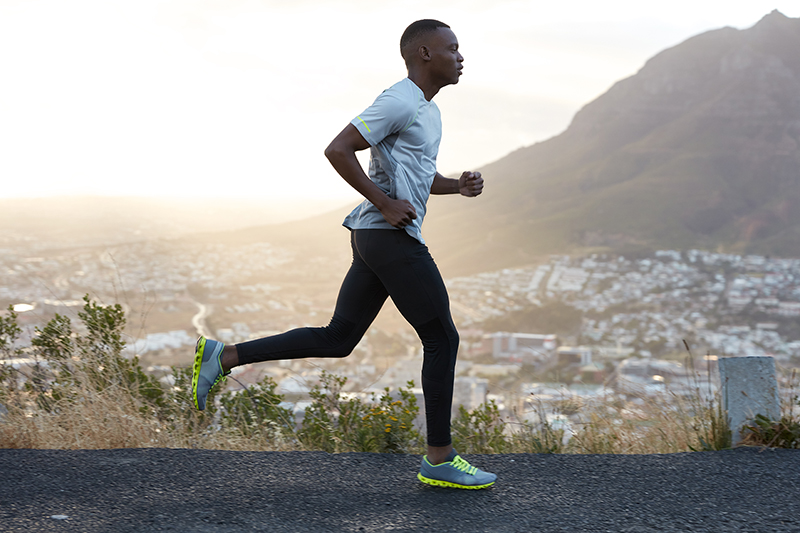Running-Related Injuries (RRI)
Insights into key risk factors and the role of Physiotherapy in treating RRI
Running-related injuries are a common concern for both recreational and competitive runners. Understanding the key risk factors associated with these injuries can help athletes take preventive measures and minimize their risk of injury. Here are some insights into the key risk factors for running-related injuries:
Training Errors:
Overtraining, sudden increases in training volume or intensity, inadequate rest, and improper progression of mileage are common training errors that can lead to injuries. Gradually increasing mileage and intensity while allowing for proper recovery is crucial in injury prevention.
Biomechanical Factors:
Poor running form and biomechanical imbalances such as overpronation, leg length discrepancies, and muscle weakness or tightness can contribute to running-related injuries. Addressing these issues through proper footwear, gait analysis, and strength training can help mitigate the risk.
Previous Injury History:
A history of previous running-related injuries increases the risk of future injuries. It’s important for runners to rehabilitate fully from past injuries and address any underlying issues to prevent recurrence.
Running Surface:
The type of surface on which a runner trains can impact injury risk. Hard surfaces like concrete can increase the risk of impact-related injuries, while softer surfaces like grass or trails may reduce the strain on joints and muscles.
Footwear:
Wearing improper or worn-out footwear can contribute to running injuries. It’s essential to wear shoes that provide adequate support, cushioning, and stability for your foot type and running gait.
Muscle Imbalances and Weakness:
Weakness or imbalances in the muscles supporting the lower body, such as the quadriceps, hamstrings, calves, and hip abductors, can increase the risk of injuries. Strength training exercises targeting these muscle groups can help prevent imbalances and improve stability.
Inadequate Warm-Up and Cool Down:
Skipping proper warm-up and cool-down routines can increase the risk of muscle strains and other injuries. Dynamic warm-up exercises help prepare the body for the demands of running, while cool-down stretches aid in muscle recovery and flexibility.
Nutrition and Hydration:
Poor nutrition and hydration can impact performance and recovery, increasing the risk of injuries. Proper hydration, balanced nutrition, and adequate fueling before, during, and after runs are essential for optimal performance and injury prevention.
Age and Gender:
Older age and female gender have been associated with a higher risk of certain running-related injuries, such as stress fractures and patellofemoral pain syndrome. Understanding these demographic risk factors can help individuals take appropriate preventive measures.
Environmental Factors:
Running in extreme weather conditions, such as high heat or cold, can increase the risk of dehydration, heat exhaustion, or hypothermia, which may contribute to injuries. Adjusting running plans and staying mindful of environmental conditions can help mitigate these risks.

Physiotherapy plays a significant role in the prevention, management, and rehabilitation of running-related injuries.
Here's how Physiotherapy can be beneficial
Assessment and Diagnosis:
Physiotherapists are trained to assess and diagnose various musculoskeletal issues related to running injuries. They can identify biomechanical abnormalities, muscle imbalances, and movement dysfunctions that may contribute to injuries.
Individualized Treatment Plans:
Physiotherapists develop personalized treatment plans tailored to the specific needs of each runner based on their assessment findings. These plans may include a combination of manual therapy techniques, therapeutic exercises, and modalities aimed at addressing the root cause of the injury and promoting healing.
Pain Management:
Physiotherapy helps in alleviating pain associated with running injuries through techniques such as manual therapy, soft tissue mobilization, joint mobilization, and modalities like ultrasound or electrical stimulation. Pain management allows runners to continue with their training or return to running gradually without exacerbating the injury.
Correction of Biomechanical Deficits:
Physiotherapists can identify and address biomechanical deficits that contribute to running injuries, such as poor running form, muscle imbalances, and faulty movement patterns. Through corrective exercises, gait analysis, and biofeedback, they help runners improve their biomechanics to prevent future injuries.
Muscle Strengthening and Conditioning:
Physiotherapy focuses on strengthening the muscles that support the lower body and improving overall conditioning to enhance running performance and reduce the risk of injuries. Specific exercises targeting areas such as the core, hips, glutes, and lower limbs help improve stability, balance, and proprioception.
Flexibility and Range of Motion:
Maintaining adequate flexibility and range of motion is crucial for preventing muscle strains and injuries in runners. Physiotherapists prescribe stretching exercises and manual therapy techniques to improve flexibility and joint mobility, reducing the risk of overuse injuries.
Return to Running Programs:
After an injury, physiotherapists guide runners through structured return to running programs that gradually reintroduce running activities while monitoring for any signs of recurrence or exacerbation. These programs help ensure a safe and successful return to running without risking further injury.
Education and Injury Prevention Strategies:
Physiotherapists educate runners about proper running mechanics, footwear selection, training principles, and injury prevention strategies to empower them to take an active role in their recovery and minimize the risk of future injuries.
Postural Correction and Ergonomic Advice:
Addressing postural imbalances and providing ergonomic advice for activities of daily living and workplace ergonomics can help prevent recurring injuries and promote overall musculoskeletal health.
Collaboration with Other Healthcare Professionals:
Physiotherapists often collaborate with sports medicine physicians, orthopedic surgeons, podiatrists, and other healthcare professionals to ensure comprehensive care for runners with complex or persistent injuries.
In summary, Physiotherapy plays a crucial role in the management of running-related injuries by providing individualized treatment, addressing biomechanical deficits, promoting healing, and implementing injury prevention strategies to help runners achieve optimal recovery and performance.
Courtesy:
- Image from www.freepik.com
- This article was written with the help of open.ai and was vetted for accuracy by a Registered Physiotherapist before publishing. This article is not intended to replace any medical advice, if you have problems while running you are advised to consult the Physiotherapist to arrive at a diagnosis and a proper treatment plan. Thank you.

